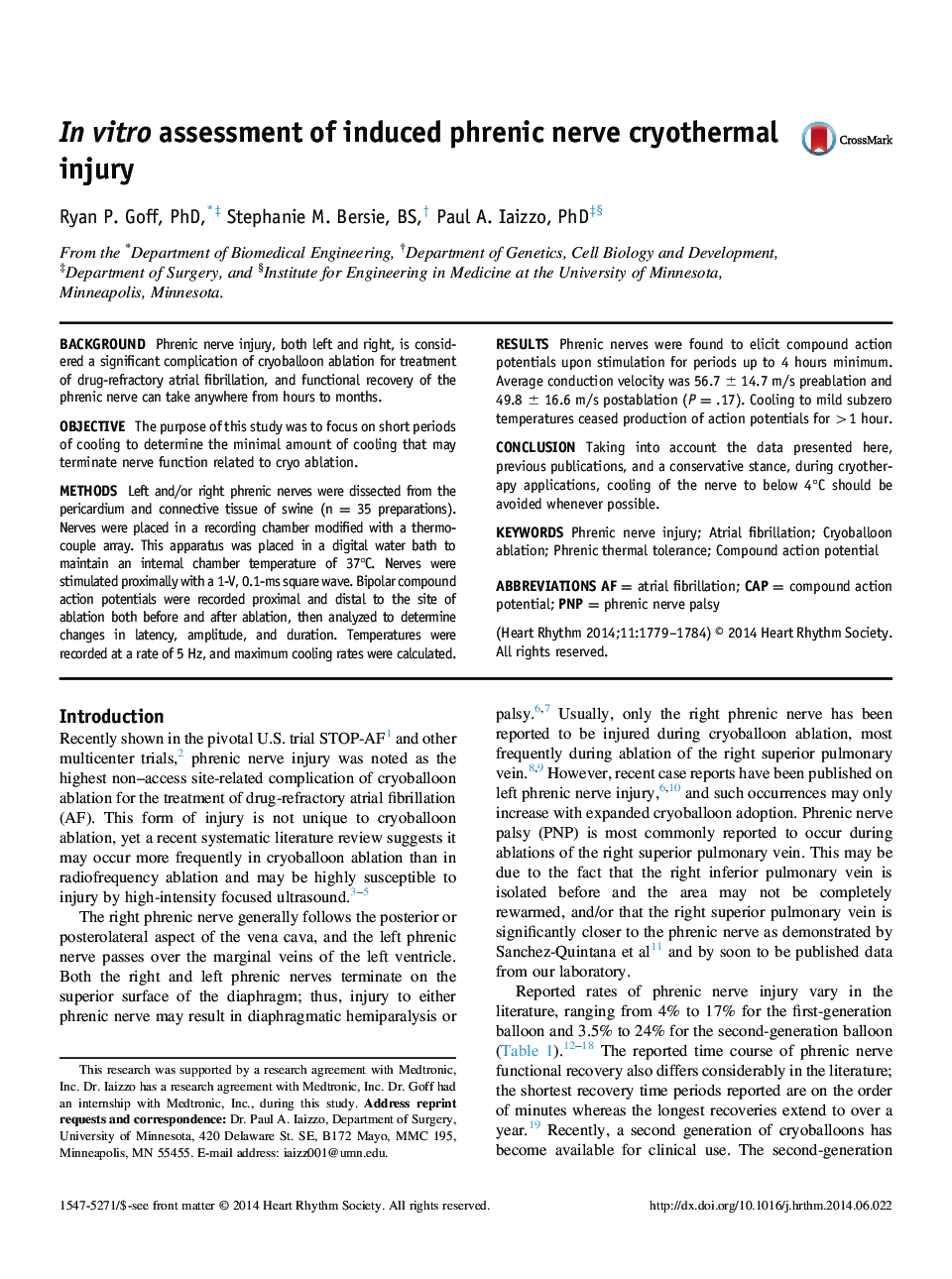| Article ID | Journal | Published Year | Pages | File Type |
|---|---|---|---|---|
| 2921922 | Heart Rhythm | 2014 | 6 Pages |
BackgroundPhrenic nerve injury, both left and right, is considered a significant complication of cryoballoon ablation for treatment of drug-refractory atrial fibrillation, and functional recovery of the phrenic nerve can take anywhere from hours to months.ObjectiveThe purpose of this study was to focus on short periods of cooling to determine the minimal amount of cooling that may terminate nerve function related to cryo ablation.MethodsLeft and/or right phrenic nerves were dissected from the pericardium and connective tissue of swine (n = 35 preparations). Nerves were placed in a recording chamber modified with a thermocouple array. This apparatus was placed in a digital water bath to maintain an internal chamber temperature of 37°C. Nerves were stimulated proximally with a 1-V, 0.1-ms square wave. Bipolar compound action potentials were recorded proximal and distal to the site of ablation both before and after ablation, then analyzed to determine changes in latency, amplitude, and duration. Temperatures were recorded at a rate of 5 Hz, and maximum cooling rates were calculated.ResultsPhrenic nerves were found to elicit compound action potentials upon stimulation for periods up to 4 hours minimum. Average conduction velocity was 56.7 ± 14.7 m/s preablation and 49.8 ± 16.6 m/s postablation (P = .17). Cooling to mild subzero temperatures ceased production of action potentials for >1 hour.ConclusionTaking into account the data presented here, previous publications, and a conservative stance, during cryotherapy applications, cooling of the nerve to below 4°C should be avoided whenever possible.
